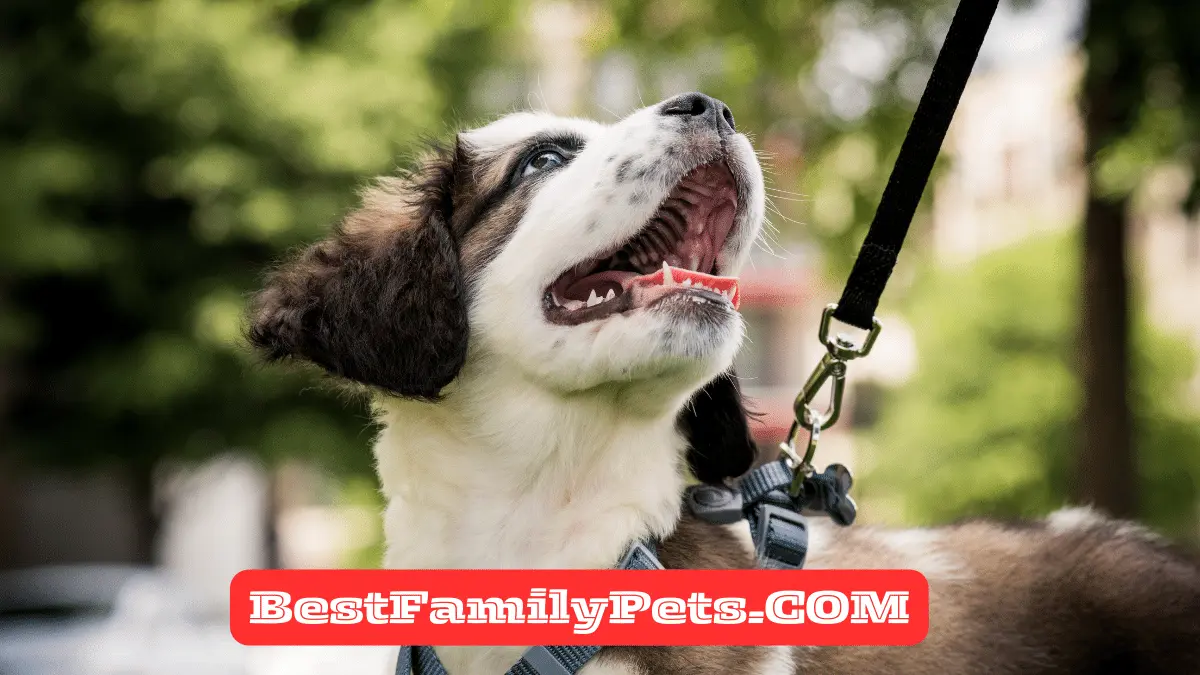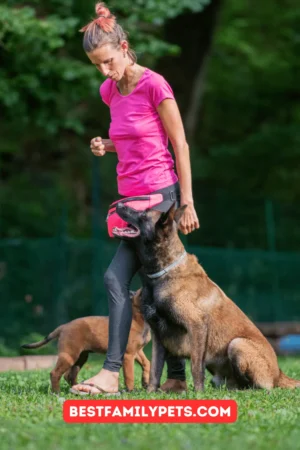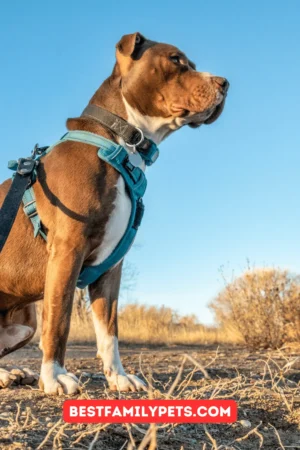Dog Aggression: 8 Reasons That May Be Triggering Your Dog
Confused by your dog’s aggression? We explore 8 common reasons behind dog aggression, helping you understand and address their behavior for a happier, calmer pup.
If you dread going out for a walk with your dog because you know your normally calm, loving, house dog will turn aggressive once they encounter another animal or person, then there could be a reason for the behavior. The causes could be due to genetics, but could also be due to an underlying problem such as stress or pain.
In order to help your pet, you will need to look at what could be causing the aggressive reactions and work from there. By looking at the main causes you could make walking your pet a more pleasurable experience for both of you.
1. Genetics
Certain breeds are more likely to be aggressive unfortunately but this is generally shown to be because a breeder paired two aggressive dogs for breeding.
2. Protectiveness
If your dog feels that you are being threatened, they will react with anger. This is because they see you as part of their pack. It’s not uncommon for dogs to become protective over new additions to the family such as a new baby or puppy.
3. Guarding
Dogs do not like their space being invaded and will have more than likely experienced aggression previously when unknown dogs come near their home. This comes from pack mentality and is not easy to prevent.
4. Predatory
Dogs love to chase and have a natural instinct for hunting. If your dog often chases people or other animals it could be due to them still having that in build predatory predisposition. Some dogs are more prey driven than other kinds of dogs.
5. Frustration
Just like a child, if a dog is stopped from doing something they want to do, they could act out aggressively to show their frustration.
6. Social threats
If a dog feels their own dominance is under threat they can act out aggressively
7. Pain
As with humans, dogs can be crabby if they are in pain. This is why dogs often act out if they are hurt and you try to help them, or if they anticipate further pain.
8. Fear
Just like humans, dogs have fears too. If they are frightened of a person or environment they can show aggressive traits. This can also occur if a dog has been allowed to do something previously but is then reprimanded. It can also occur if a dog has got its own way previously by acting in an aggressive manner.
How to treat aggression in dogs
In order to treat your dog’s aggression, you must first know the cause and remember that it is most likely to have come from anxiety or fear. Using aggressive devices such as electric shock and choke chains can make the problem worse. For puppies, it is best to expose them to other animals and people so that they don’t develop aggression later in life due to fear and poor socialization.
For older dogs, you can desensitize them slowly by introducing them to their fears carefully until they adjust to the stimuli. Be sure you treat your dog with dog treats and a lot of fuss so that they relate the experience to something good and positive. Keep calm and ensure the environment is as calm as possible, which could also come from a fixed routine so they know what to expect throughout the day.
Make your dog a safe space with their toys and blankets so that they can walk away from stress and know where to go should they feel uncomfortable with a situation.
You can also use natural supplements to keep your dog calm, but you should avoid sedatives as they can make the problem worse.
You may also like these:
-

The Importance of a Dog Leash
Choosing the right dog leash for your dog is a necessity for their safety, comfort, and identification.
-



The 12 Best Dog Bowls of 2024 for Dachshunds: How to Choose the Right One
best dog bowls for miniature dachshunds, Dachshund, dachshund food and water bowls, Dog Bowls, food bowls for dachshunds, Should Dachshunds have raised bowls?, Should dogs eat off the floor?By considering the options and factors outlined in this article, you can find the perfect bowl to keep your Dachshunds healthy and happy.
-



Review: PetSafe Simply Feed Automatic Feeder
Are you a busy pet parent who struggles to maintain a consistent feeding schedule for your furry friend? The PetSafe Automatic Feeder might is here.
-



Review: JW Pet Skid Stop Slow Feed Bowl
Does your dog inhale their food in seconds flat? If so, you might be interested in trying a JW slow feeder bowl.
-



Review: Dogit Slow Feeder Dog Bowl
Does your furry friend devour their meals in a flash? If so, you might want to consider a Dogit slow feeder bowl.
-



Review: Outward Hound Fun Feeder Slo Bowl
Does your dog inhale their food in seconds flat? If so, you might be interested in trying a slow feeder bowl.
-



Review: NMN Products Raised Dog Bowls
NMN Products offers a selection of raised dog bowls known for their stylish designs and focus on pet comfort.
-



Review: Pet Zone Adjustable Elevated Pet Feeder
The Pet Zone Designer Diner Adjustable Elevated Pet Feeder aims to elevate your pet’s mealtime experience in both form and function.
-



Review: FOREYY Raised Pet Bowls for Small and Medium Dogs
Looking for a simple and affordable way to elevate your small or medium dog’s mealtime? The FOREYY Raised Pet Bowls might be the perfect option for you.
-



Review: PetFusion Elevated Dog Bowls
Looking for a stylish and functional way to elevate your pup’s mealtime? Look no further than PetFusion’s Elevated Dog Bowls!
-



Belgian Malinois Pitbull Mix: Loyal, Energetic & Smart
Belgian, Belgian Malinois, Belgian Malinois Pitbull Mix, Belgian Shepherd, Belgian Shepherd Malinois, Pitbull MixDiscover the loyal, energetic, and smart traits of the Belgian Malinois Pitbull mix. Learn more about this unique breed blend today! #belgianmalinoispitbullmix
-



Overview of DNA Testing for Belgian Malinois Dogs
Unleash insights about your Malinois! Explore “DNA dog test for Belgian Malinois” to discover breed, health & behavior traits.
-



Adopting a Puppy/ What you need to know
You have chosen your puppy from a litter, at a reputable Breeders. Soon you will be ready to bring him home it is time to get a few things that you are going to need before his arrival. What age can your Puppy come home? Dogs are not able to eat solid food until they…
-



The Ultimate New Puppy Checklist
Welcome your furry friend prepared! Our ultimate Puppy Checklist covers essentials from supplies to training tips. Get it all right here.
-



Choosing the Best Dog Harness for Hip Dysplasia
Finding the best dog harness for hip dysplasia? This guide explores options for support, comfort, & mobility, helping your furry friend live an active life.
















